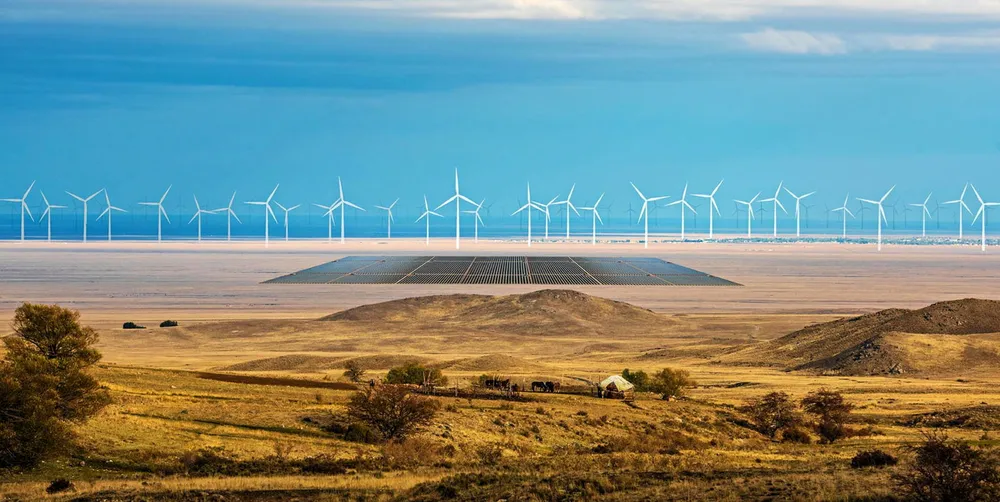World’s largest green hydrogen plan to tap 45GW of wind and solar in Kazakhstan
German developer Svevind eyes massive build on Kazakh steppe to fuel 30GW of electrolysers producing three million tonnes of green H2

German investor and project developer Svevind Energy and Kazakhstan’s investment promotion agency have signed a memorandum of understanding (MoU) to develop what would be by far the world’s largest single-nation green hydrogen facility planned to date.
Svevind plans to install wind and solar arrays with a combined capacity of 45GW in flat steppe areas in western and central Kazakhstan, which would feed 30GW of electrolysers to produce about three million tonnes of green hydrogen per year.
“Svevind aims to combine the outstanding natural resources in Kazakhstan with Svevind’s long-time experience and passion in project development to supply Kazakhstan and Eurasia with green, sustainable energy and products,” the developer’s majority owner and chief executive Wolfgang Kropp said.
“The green hydrogen facilities will lift Kazakhstan among the global leaders of renewable energy and hydrogen at very competitive, ultra-low production costs. We trust that for green hydrogen, Kazakhstan is the place to be.”
Svevind didn't reveal an exact investment figure for the massive plan, but said costs will likely be in line with those of similar renewable hydrogen projects in Chile or Australia. The developer expects a final investment decision between 2025 and 2027.
Markbygden track record
Although the Kazakhstan plan is hugely ambitious, Svevind has proved that it can pull off huge wind projects.
The developer in mid-May presented its massive green hydrogen plan to the Kazakh government during consultations in the central Asian nation’s capital of Nur-Sultan.
The Kazakh project’s overall development, engineering, procurement and financing phases are expected to take three to five years. Construction and commissioning phases are predicted to take approximately five years, according to Svevind.
Meirzhan Yussupov, chairman of the board of investment promotion agency Kazakh Invest, said the green hydrogen could be used in transport, energy and the railway industry, contributing to the advancement of low-carbon development in Kazakhstan.
“The promotion of low-carbon development is in line with the strategic direction of development of the Republic of Kazakhstan and the obligations undertaken in the framework of international agreements,” Yussopov said.
“Through the development of hydrogen energy, Kazakhstan can find its niche in the world supply of hydrogen.”
(Copyright)